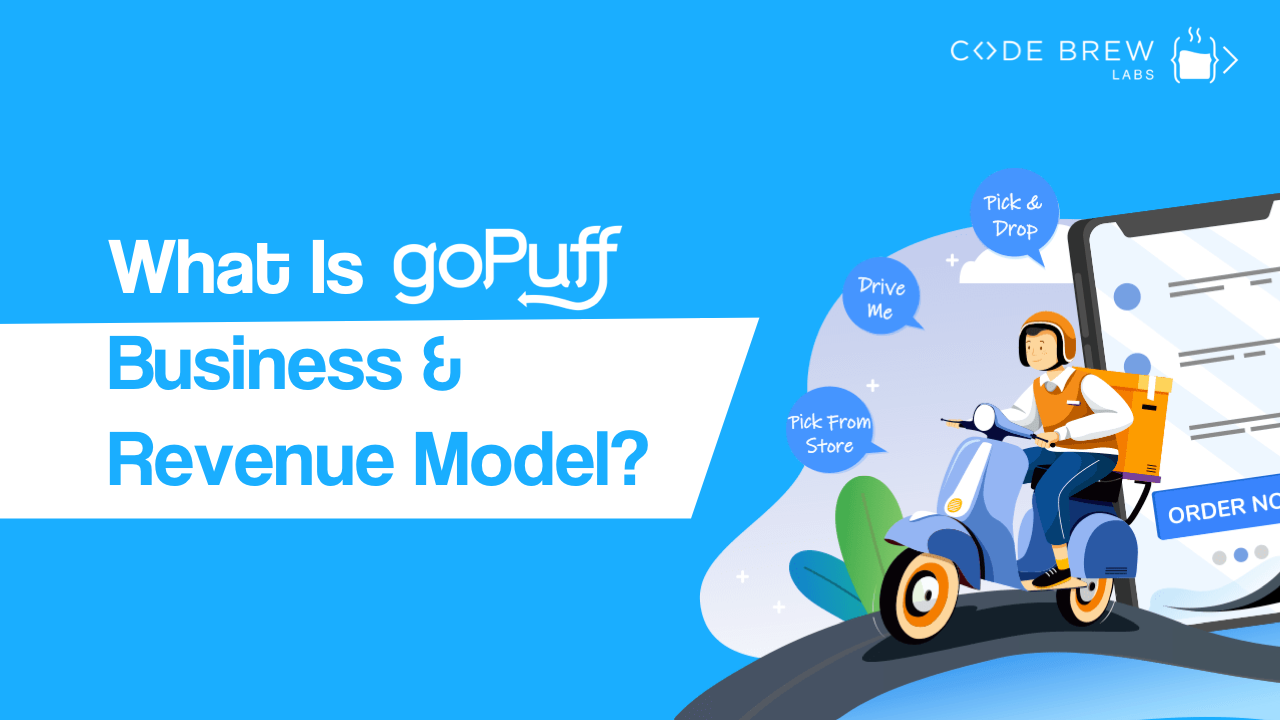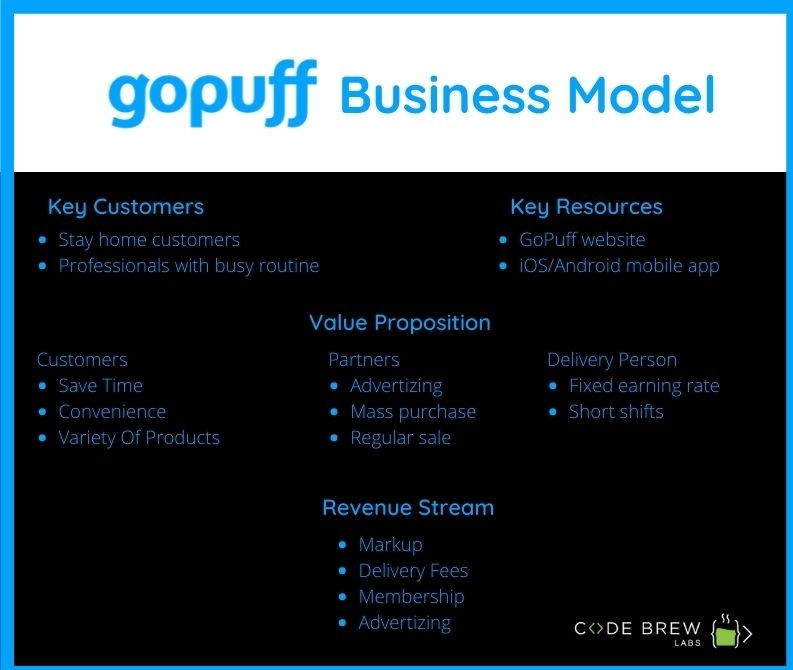
On-demand food delivery services allow consumers to order food from a provider as per their required time and location. The industry has grown rapidly in recent years and the growth has seen even more rapid hike due to stay home restrictions during COVID-19. Some on-demand food delivery services provide a platform where consumers order food from different restaurants or grocery stores and the app contacts the providers after the order is placed. However, other on-demand food delivery services such as GoPuff adopt an inventory based business model.
See Also: 6 Most Efficient Marketplace Business Models To Boost Revenue
GoPuff was launched in 2013 and is headquartered in Philadelphia, Pennsylvania. The on-demand food and grocery delivery platform was founded by two university students, Yakir Gola and Rafael Ilishayev. They started by selling convenience items from the back of their Plymouth Voyager before launching an app in December 2013. The mobile app development was then expanded to Chicago and Washington, D.C. before slowly starting operations across 650 cities in US.
In 2020, GoPuff announced company’s total value to be $8.9B. Such exceptional growth in a short span after its launch has garnered immense interest from entrepreneurs. If you are also one of the entrepreneurs who wish to launch GoPuff clone, here is an insight into GoPuff business model to help you launch your delivery app like GoPuff.
GoPuff business model is an inventory based business model. The on-demand food delivery platform purchases products or goods from different manufacturers. These products are stored in its warehouses. The company has its micro fulfillment centers in different locations to ensure order fulfillment in 30 minutes. Consumers can check the products in the inventory on the GoPuff app to place their order. The price of the products listed on the app includes GoPuff profit and a delivery cost is charged for every order. Let us now discuss different components of GoPuff business model in detail:

GoPuff Business Model
Key Customers: The key customers of GoPuff food delivery app are consumers who cannot step out to purchase food and grocery items for daily use. Such consumers can place their orders at the GoPuff app and receive the products at their doorstep.
Key Resources: The key resources of GoPuff are its website and easy to use app which connect the food and grocery delivery service with its customers.
Value Proposition: GoPuff adds value to its customers, delivery person and the product manufacturers.
Value for customers-
Value for manufacturers-
Value for delivery person-
Thorough analysis of GoPuff business model is important before launching our own GoPuff clone app. So, here is a comprehensive list of pros and cons of the business model.
Pros Of GoPuff Business Model
Cons Or Challenges Of GoPuff Business Model:
GoPuff revenue model has four revenue streams that help GoPuff earn money. Let us take a look at every revenue stream individually.
Food Startup Lessons To Take From Grubhub
GoPuff is an on-demand food and grocery delivery app that has expanded to 550 cities in just 7 years since its inception in 2013. This article sheds light on the inventory based GoPuff business model and different streams of GoPuff revenue model to help entrepreneurs like you in launching GoPuff clone app. Before launching your own on-demand food delivery service like GoPuff, you need to research more about queries such as how to launch an app like GoPuff, features of GoPuff clone and cost of building an app like GoPuff. Fret not! We at Code Brew have answers to all your queries and have all the resources to help you launch your GoPuff clone with advanced features at a low cost. Let’s connect now!
